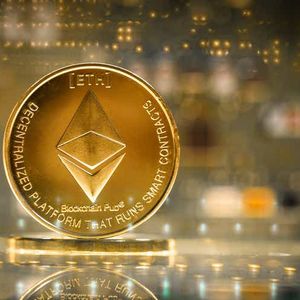The Theoretical Problem Of L2 In Ethereum
6 min read
Summary Ethereum’s shift to Proof of Stake and Dencun upgrade have improved scalability and reduced rollup fees, reinforcing its role as a consensus layer. Layer 2 protocols like Arbitrum and Optimism generate significant fees, but most are burned, making Ethereum deflationary as usage grows. Despite concerns, Ethereum’s inability to directly monetize Layer 2 activity is offset by the deflationary impact of fee burning, supporting long-term value. With the recent Pectra update, I see medium- to long-term upside for Ethereum, but recommend monitoring key metrics and maintaining a balanced crypto portfolio. Introduction Repeatedly, and we could say that it is beginning to be vox populi, I have heard or read that Ethereum has a big problem. That it is not able to properly monetise its technological infrastructure, that the protocol itself yields to other layer 2 solutions, rollups or zero knowledge proofs. In today’s article we will try to unravel that point, in order to offer a vision of where Ethereum is and some of the solutions that run on its layer, Arbitrum, Optimism, Base or Polygon (PoS). We will study all these protocols from the point of view of fee generation and how they all relate to layer 1 (Ether). Repeatedly, and we could say that it is beginning to be vox populi, I have heard or read that Ethereum has a big problem. That it is not able to properly monetise its technological infrastructure, that the protocol itself yields to other layer 2 solutions, rollups or zero knowledge proofs. In today’s article we will try to unravel that point, in order to offer a vision of where Ethereum is and some of the solutions that run on its layer, Arbitrum, Optimism, Base or Polygon (PoS). We will study all these protocols from the point of view of fee generation and how they all relate to layer 1 (Ether). Before we start, we need a bit of context. Ethereum changed its consensus protocol in September 2022 from Proof Of Work (PoW) to Proof Of Stake (PoS) ( The Merge ). The only thing you need to know about this is that it changed the computational power by temporarily locking down the ETH assets held by the miners, now validators. If before you had to dedicate a lot of computational resources to ‘mining’, now you have to block a minimum amount of Ether to be able to validate the chain. We explain this because after this update came several (London, Dencun, Pectra…), but we will stop at the second one; Dencun. Dencun, activated on Ethereum on 13 March 2024, marked a milestone in the evolution of the network by introducing the concept of proto-danksharding through the implementation of EIP-4844. This technical improvement has allowed rollups (such as Arbitrum, Optimism or Base) to publish their data on the core network through a new format called blobs, which is much cheaper than traditional call data. These blobs are temporary data segments (~128 kB each) that cannot be accessed by smart contracts and are automatically deleted after approximately 18 days. The fees associated with these blobs – called blob base fees – are part of a separate market from conventional gas and, like the base fee for traditional gas, are completely burned, reducing the supply of ETH. The impact was immediate: transaction fees for rollups have been reduced by up to 90%, relieving base layer congestion and reinforcing Ethereum’s role as an availability and consensus layer. Analysis In this first graph, we show the price evolution of the price of ETH compared to the evolution of the fees generated by layer 2 or zero knowledge protocols, such as Arbitrum, Optimism, Base, Polygon ( MATIC ) or zkSync. We have removed from this graph the fees generated by layer 1 ( ETH ) for the sake of clarity. It can be clearly seen, and the spearman correlation coefficients confirm (0.74) that when there is an increase in the generation of fees from these protocols there is an expansion of the price of ETH. Even so, these fees generated do not go to the Ethereum protocol itself, but rather most of them are burned (Base Fees) and only the Priority Fee ends up in the native network, in the form of a reward to the validators that secure the chain itself. For now, we have a key factor in understanding the economics of Ether. The green bars are weekly increases of more than 10% in the generation of these fees, which coincide with local peaks in Ethereum’s own price. ETH Fees (Node Analytica) In the following graph, we can see the same as in the previous one, but with a comparison of the price of the Optimism token. As mentioned above, Optimism is a layer 2 rollup that uses Ethereum’s infrastructure to guarantee the same levels of security, but optimising transactional capacity and cost. Here too, the local maximums of the asset price coincide with the maximums of the fees generated by the different protocols analysed. The spearman correlation coefficient in this case is slightly lower than the previous one (0.62). The green bars, as in the previous section, signify weekly growth of more than 15% in the fees variable. ETH Fees (Node Analytica) In the following graph, we can see the same as in the previous one, but with a comparison of the price of the Optimism token. As mentioned above, Optimism is a layer 2 roll-up that uses Ethereum’s infrastructure to guarantee the same levels of security, but optimising transactional capacity and cost. Here too, the local maximums of the asset price coincide with the maximums of the fees generated by the different protocols analysed. The spearman correlation coefficient in this case is slightly lower than the previous one (0.62). The green bars, as in the previous section, signify weekly growth greater than 15% in the fees variable. To answer the question, we posed at the beginning of this article, is Ethereum not monetising the ‘rent’ of its infrastructure well, and does that pose a short/medium term challenge for the network? We look at the graph below, which relates the price of Ethereum vs. the percentage of fees represented by each of the protocols analysed, including Ethereum. We show data from October 2022, as ‘The Merge’ update was implemented in September 2022. It can be seen that at some points in time, layer 2 solutions are eating into Ethereum’s share of total fee generation, but this is not aligned with the price of the asset. There is no correlation. The fact that layer 2 solutions are generating more fees in percentage terms does not mean that the core network is obsolete or does not know how to monetise its technological infrastructure. Because the Ethereum protocol wins on the other hand. While it is true that it does not monetise per se the fact that others use its technological infrastructure, it does burn most of the fees generated by these protocols, which makes the main protocol deflationary if the underlying protocols (layer 2, rollups and zk) have an increase in users and/or transactions. In the end, fees are composed of two elements: Base fee: fee generated by transacting on layer 2 itself, which is always burned. Priority fee: fee paid for faster transaction processing. These fees are not burned and will reward validators who block their Ether to validate the chain. Knowing this, the only fees that enter the main chain are the priority fees, but the entire base fee is burned, reducing the circulating supply of Ethereum. That is the big point of this issue. Ethereum does not directly charge those who use its infrastructure, but it burns most of the Ethereum spent by users interacting with those protocols that use its technology stack. Node Analytica Conclusion In conclusion, I firmly believe that there is no problem in the short/medium term with the issues raised here. If the reader is considering buying Ethereum, I recommend monitoring these types of variables on sites such as Artemis Crypto, Dune Analytics or native blockchain explorers such as Etherscan or Polygonscan. With the new update (Pectra) recently implemented on the network, I think it may be a good time to buy for the medium to long term. As always, beware of short-term volatility, monitor Bitcoin, which is king, and have a balanced portfolio, especially in crypto.

Source: Seeking Alpha



